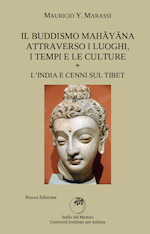Needless to say, before falling back on luck, it is better to apply creative savvy. I think we can call takuhatsu a kind of enterprise, albeit not a particularly large-scale one. If the aims of the management are misguided, the company will go down the drain. A healthy business requires always looking at the big picture. Applying this to takuhatsu, we naturally have to have a “business map,” but a takuhatsu map is not a kind of tourist information map or road map. You have to mesh your own needs with the prosperity of the neighborhood. You have to decide how often your going for donations will be acceptable to the people living there. Practically speaking, if all the shops in a particular area seem to have a steady stream of customers, you can conclude that the district is fairly prosperous, but you still need to avoid being burdensome for the community. Therefore, you draw a line at once a month. On the other hand, sometimes there’s an area that always contributes well, but is obviously an economically challenged area. You have to put yourself in their shoes and see how difficult it must be for them to give so much; even though they are good contributors, maybe two or at most three times a year would be best. When I would go out, I would take note of these things in my mind and add them to my takuhatsu map. If you don’t consider them, and go back three or four times in quick succession just because they put a lot of money into your bowl the first time, you are going to be in for a shock. They will get to know your face and will not only stop putting anything in your bowl, they will stop looking at you at all and your bowl will soon dry up. The reason I think I was able to continue takuhatsu for over ten years without my bowl ever being bone dry in a city as small as Kyoto, and receiving the patronage of the local people while raising my “sales” results consistently, was my “business policies” in regard to takuhatsu as an enterprise. The heavy atmosphere just before storms are strangely good times for takuhatsu. The sky above the northern mountains becomes pitch black, the thunder begins to roll and the clouds move ominously closer. At those times, I am resigned to getting a good soaking, but as I keep on takuhatsu, the storeowners begin running outside to get everything under a roof or awning. And when I stop in front of a shop, the owner wastes no time in putting something in my bowl. Right away, I move on, and right away, the next fellow comes out to put money in the bowl. These few minutes of confusion and hurrying around just before the storm hits are great for raising efficiency. Dusk at the vernal equinox, works the same way. At that shadowy time of the day, just about the time it feels like there could be some sort of demon lurking around the nearest corner, the atmosphere in the streets turns somewhat frantic. Kyoto seems to be a place where you would almost expect some eerie spectacle to appear from out of the shadows. People in Kyoto have long dhad this fear of malevolent spirits. No doubt the thunder and the early evening of the equinox generate the expectation of spirits and goblins swaggering about. It is in just that atmosphere that a monk out on takuhatsu matches the need of the people and surely this boosts sales. Festivals are another special occasion. Right up to the start of the festival is great for doing takuhatsu, but once the floats start rolling down the street, forget it. It is the same during a fire. At times like this, what else is there to do but enjoy the parade?
Back
Se volete, lasciate un commento.
You must be logged in to post a comment.







